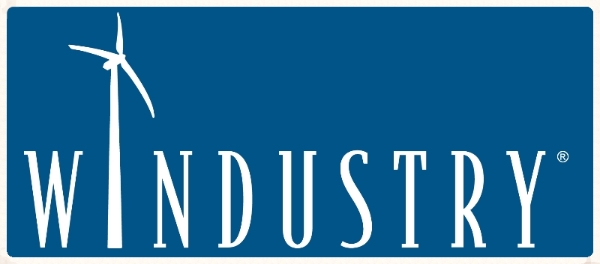This article is part of the Energy.gov series highlighting the “Top Things You Didn’t Know About…” and was written by Alice Orrell, Energy Analyst, Pacific Northwest National Laboratory. The original article can be found here.

Mid-Sized Distributed Wind: Two mid-sized wind turbines in operation at Wayne Industrial Sustainability Park in Ontario, New York. Photo courtesy of Sustainable Energy Developments, Inc.
10. Distributed wind power is used at or near where it is generated, as opposed to wind power from wholesale generation, where power is sent to consumers via transmission lines and substations. Employed by households, schools, farms, industrial facilities and municipalities, distributed wind doesn’t only refer to small-scale turbines; it includes any size turbine or array of turbines that generates power for local or on-site use.
9. People have used wind energy for more than 2,000 years to pump water and grind grain. In the 19th century, wind-powered water pumps made life possible in arid regions of the United States and Australia by tapping and bringing water to the surface from deep aquifers. Between 1850 and 1970, more than 6 million small wind turbines were installed in the U.S. alone, primarily for water pumping. Read more about the history of wind energy.
8. You can find wind turbines used in distributed applications all across the United States. At the end of 2015, U.S. wind turbines in distributed applications reached a cumulative installed capacity of more than 934 megawatts (MW) from nearly 75,000 turbines across all 50 states, the District of Columbia, Puerto Rico, and the U.S. Virgin Islands. That’s enough capacity to power more than 142,000 American homes.
7. A large portion of all wind turbines installed in the United States generate power for on-site or local use. On a unit basis, distributed wind installations account for more than 66 percent of the roughly 114,000 total wind turbines installed in the United States since 2003 and accounted for about 30 percent of all wind turbines installed in the United States in 2015.
6. Texas’ 11.5 MW distributed wind project at the National Nuclear Security Administration’s Pantex Plant in Texas highlights the U.S. government’s commitment to on-site renewable energy generation.
5. Faster wind speeds mean more electricity. Wind speeds at 30 meters above the ground– an average height for distributed wind applications–can be found across the country. Check out this residential-scale wind resource map to see how strong winds are in your area.
4. Reducing utility bills and hedging against potentially rising electricity rates are commonly cited reasons for installing distributed wind. In addition, many utilities compensate the distributed wind (or other generation) owner for excess energy generated that is returned to the grid — a practice called “net metering.”
3. As the distributed wind marketplace matures, third parties are providing certification of small and mid-size wind turbines to ensure turbines perform as advertised. The Interstate Renewable Energy Council lists certified small wind turbines on its website. The Energy Department encourages consumers to purchase certified wind technologies; it should be noted that wind technologies must be installed in specific wind resources to operate as intended.
2. Distributed wind is a homegrown industry that strengthens the domestic economy. U.S.-based small wind turbine manufacturers favor U.S. supply chain vendors which are comprised of hundreds of manufacturing facilities and vendors spread across dozens of states– supporting jobs in manufacturing, retail, construction, and maintenance. Self-reported domestic content levels for individual small wind turbines installed in the United States in 2015 ranged from 66% to 100%, and on an aggregate level U.S.-based companies provided nearly 100% of the small wind turbines installed in the United States in 2015. For more information on the U.S. distributed wind market, check out the 2015 Distributed Wind Market Report.
1. Distributed wind contributes to the growth of U.S. exports. At 21.5 MW, U.S. manufacturers of small wind turbines posted another record year of exports in 2015, doubling capacity sent abroad. Between 2012 and 2015, U.S.-based small wind turbine manufacturers accounted for a combined $310 million in small wind turbine export sales.
